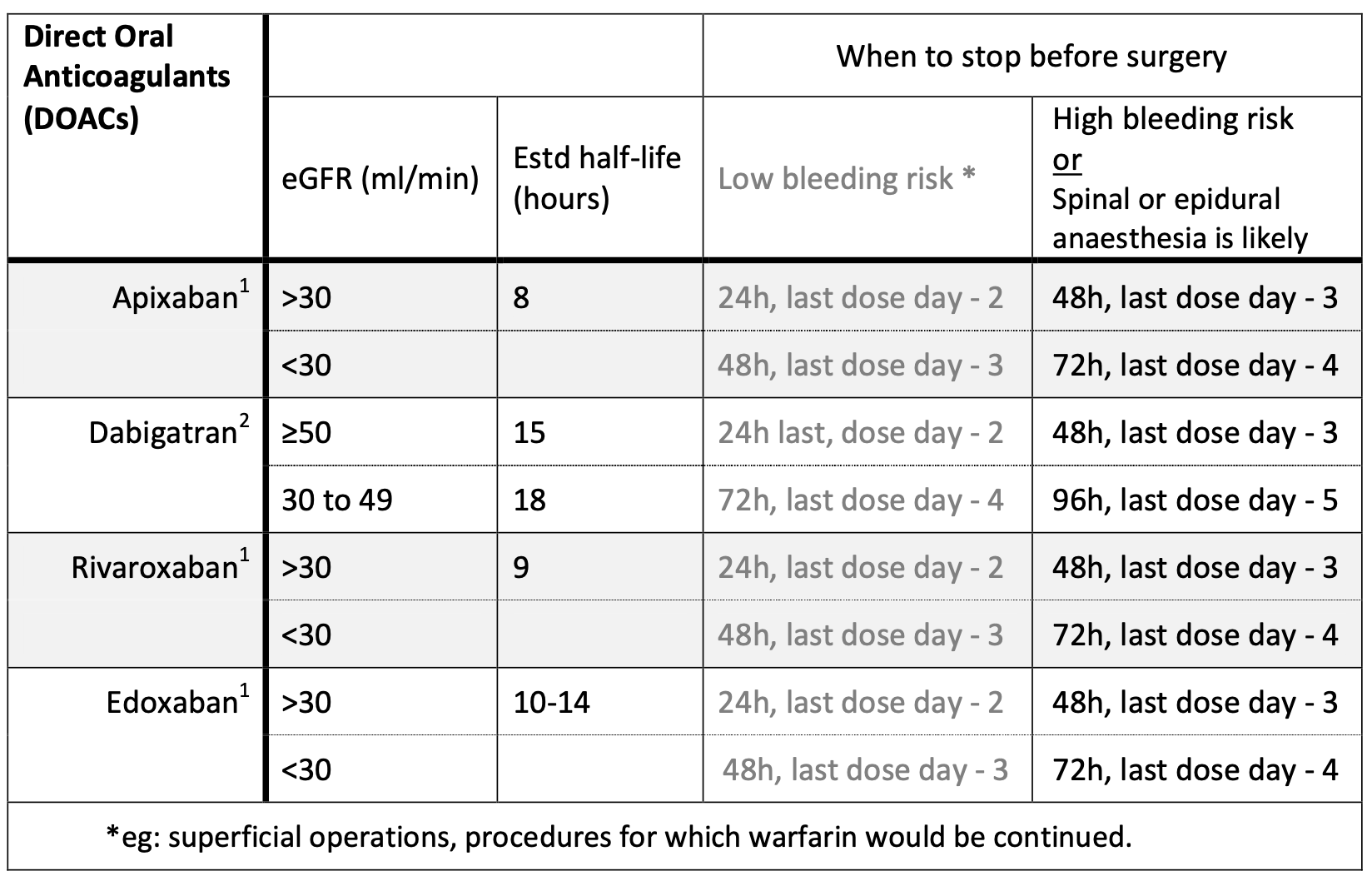
Direct Oral anti-coagulants

Direct Oral Anticoagulants (apixaban, dabigatran, rivaroxaban & edoxaban) – “DOACs”
Advantages of DOACs compared with warfarin and heparin are a predictable dose response, fewer drug-drug interactions and oral administration. On the other hand they accumulate in patients with renal impairment and monitoring tests for measuring their anticoagulant activity are not widely available.
Guidance on the management of DOACs at the time of elective surgery is based on an estimation of the drug’s half-life and thus its persistence in the circulation (taking into account renal function), combined with the bleeding risk of the proposed procedure.
Most operations should be classified as “high bleeding risk”. For operations and procedures for which warfarin would be continued consider classifying as “low bleeding risk”.
DOACs are well absorbed orally and reach peak anticoagulant levels a few hours after ingestion. Do NOT restart DOACs if the patient has an epidural catheter in situ.
- After low risk procedures in patients with low bleeding risk, no epidural catheter and in whom haemostasis has been fully secured, DOACs can be restarted within 24 hours of surgery.
- After high risk procedures, where patients have an increased bleeding risk, an epidural catheter or in any situation where an increased risk of bleeding is unacceptable DOACs should not be re-introduced at full dose until 48 - 72hours after the procedure.
- Standard weight-based thrombo-prophylaxis with dalteparin should be given until the DOAC is re-introduced.
